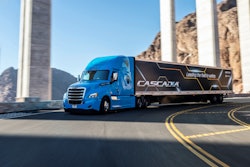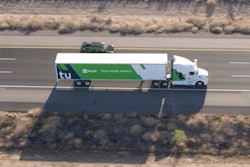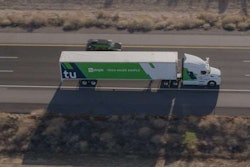“FMCSA regulations will no longer assume that the CMV driver is always a human or that a human is necessarily present onboard a commercial vehicle during its operation.”
That’s the key point from updated guidance on policies for development and deployment of autonomous vehicles issued by the U.S. DOT on Thursday, dubbed Autonomous Vehicles 3.0 (or AV 3.0, for short). It’s a loosened definition of what constitutes a truck driver, with the DOT acknowledging that a driver may not be, in fact, human.
DOT will adapt the definitions of “driver” or “operator” to recognize that such terms could instead refer to automated systems.
“Moving forward, we recognize that a human is not always required behind the wheel,” says Larry Minor, associate administrator for policy and program development at the Federal Motor Carrier Safety Administration.
Minor says the goal of broadening the interpretation is to more clearly define what is expected from the human driver and what is required of a truck’s automated system. The report states that even with ADS in control of a vehicle, “FMCSA retains its authority to take enforcement action if an automated system inhibits safe operation.”
FMCSA says it will also consider an appropriate division of authority between the agency and individual states on how or whether CDL qualifications should apply to computerized driving systems. The agency says many regulations, like those involving inspection, repair and maintenance, can be applied in the context of ADS-equipped commercial trucks and motor coaches.

U.S Secretary of Transportation Elaine Chao notes that while automated systems have made strides in technology and safety, much work still lies ahead. More than 75 percent of the motoring public say they are apprehensive about sharing the road with autonomous vehicles.
“While these technologies hold promise, they have not yet won public acceptance,” she says. “Consumer acceptance will be the constraint to growing this technology.”
The DOT will accept public comments on the guidance for 60 days. Comments will be accepted beginning Tuesday, Oct. 9, when the document is scheduled to be published in the Federal Register. Comments can be made by searching Docket No. DOT-OST-2018-0149 at www.regulations.gov.
DOT will also publish on Oct. 9 a solicitation for comment and feedback on a Congressionally mandated analysis of the impact of autonomous vehicle technologies on the workforce. The study will be conducted by the DOT in consultation with the Department of Labor to analyze the impact of advanced driver assist systems (ADAS) and highway automated vehicles (HAV) technologies on commercial vehicle drivers. Comments can be made at www.regulations.gov by searching Docket No. DOT-OST-2018-0150.








